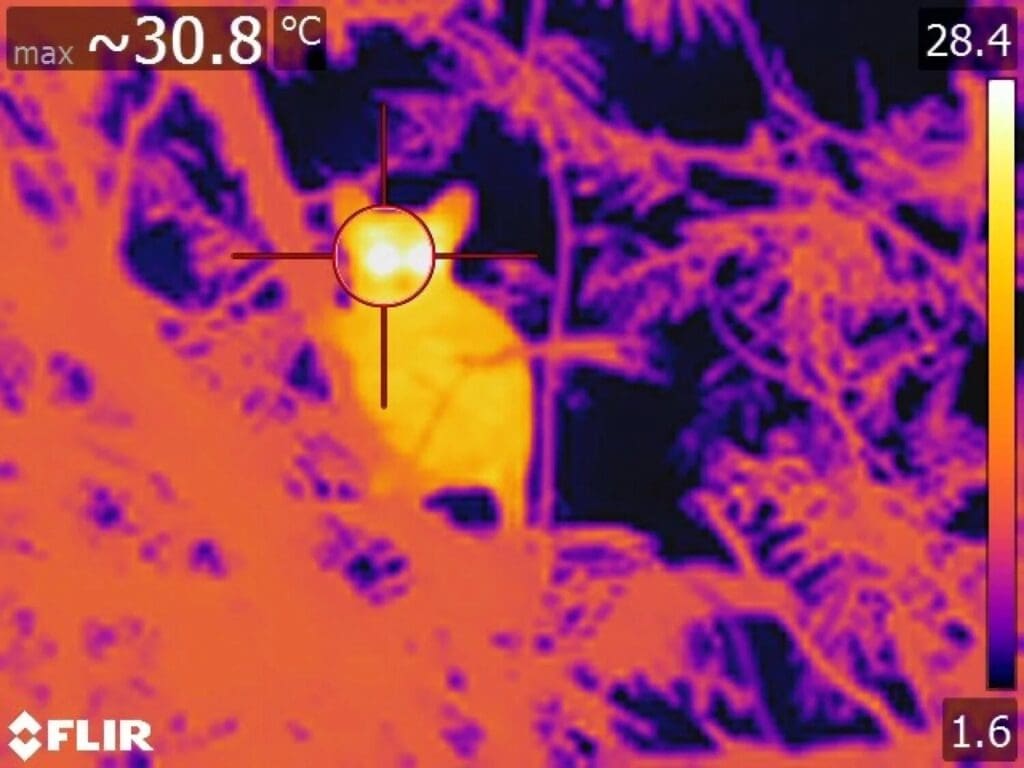Strong contribution from sensible heat to global precipitation increase in climate models is not supported by observational based data
It has previously been shown that trends in sensible heat from climate models have had a substantial contribution to global precipitation changes. We illustrate that this is the case also in the most recent Coupled Model Intercomparison Project Phase 6 (CMIP6).
However, we find that over the period since 1980 reanalyses do not support the reduction in sensible heat from the CMIP6 models and rather estimate a global increase in sensible heat which would contribute to a precipitation reduction. Satellite data over a period of two decades over global ocean generally show an opposite sign of the sensible heat trend to the CMIP6 models, similarly to the reanalyses. – Frontiers
Journal Reference:
Myhre Gunnar , Jouan Caroline , Stjern Camilla W., Hodnebrog Øivind , ‘Strong contribution from sensible heat to global precipitation increase in climate models is not supported by observational based data’, Frontiers in Climate 6 (2024). DOI: 10.3389/fclim.2024.1383337
Warming and disturbances affect Arctic-boreal vegetation resilience across northwestern North America
Rapid warming has impacted the northern ecosystem so significantly that scientists are concerned the region’s vegetation is losing the ability to recover from climate shocks, suggests a new study.
Their findings revealed that due to frequent disturbances like wildfires that raze down vegetation and persistent drought and deforestation that starve both the land and wildlife, the resilience of many plant communities in southern boreal forests — or their ability to recover after these events — significantly decreased over time. This may affect the Arctic carbon budget, foreshadowing a future where the region is likely to become a carbon source instead of remaining a carbon sink due to its limited capacity to absorb atmospheric carbon dioxide in the coming decades.
This is because Arctic and boreal regions have warmed several times faster than other places around the globe and further warming is expected in the near future, said Yue Zhang, lead author of the study and a graduate student in earth sciences at The Ohio State University. – Ohio State University
Journal Reference:
Zhang, Y., Wang, J.A., Berner, L.T. et al. ‘Warming and disturbances affect Arctic-boreal vegetation resilience across northwestern North America’, Nature Ecology & Evolution (2024). DOI: 10.1038/s41559-024-02551-0
Unexpected westward range shifts in European forest plants link to nitrogen deposition
New research reveals nitrogen pollution, and to a lesser extent climate change, unexpectedly as the key driver behind surprising westward shifts in the distribution of plants.
A recent study has uncovered that many European forest plant species are moving towards the west due to high nitrogen deposition levels, defying the common belief that climate change is the primary cause of species moving northward. This finding reshapes our understanding of how environmental factors, and in particular nitrogen pollution, influence biodiversity.
While it is widely assumed that rising temperatures are pushing many species toward cooler, northern areas, this research shows that westward movements are 2.6 times more likely than northward shifts. The primary driver? High levels of nitrogen deposition from atmospheric pollution, which allows a rapid spread of nitrogen-tolerating plant species from mainly Eastern Europe. The establishment of these highly competitive species in areas with high nitrogen deposition rates often comes at the expense of the more specialized plant species.
The results highlight that future biodiversity patterns are driven by complex interactions among multiple environmental changes, and not due to the exclusive effects of climate change alone. Understanding these complex interactions is critical for land managers and policymakers to protect biodiversity and ecosystem functioning. – German Centre for Integrative Biodiversity Research (iDiv) Halle-Jena-Leipzig
Journal Reference:
Pieter Sanczuk et al., ‘Unexpected westward range shifts in European forest plants link to nitrogen deposition’, Science 386, 193-198 (2024). DOI: 10.1126/science.ado0878
Designing Retirement Strategies for Coal-Fired Power Plants To Mitigate Air Pollution and Health Impacts
Facing competition from cheap natural gas and a growing renewables market, coal-fired power plants are on the decline in the United States. But new research led by energy systems modelers at Princeton University demonstrates that traditional strategies for retiring coal plants based on minimizing costs could be leaving other climate and equity benefits on the table.
Facing competition from cheap natural gas and a growing renewables market, coal-fired power plants are on the decline in the United States. But new research led by energy systems modelers at Princeton University demonstrates that traditional strategies for retiring coal plants based on minimizing costs could be leaving other climate and equity benefits on the table.
The analysis underscores the value of rethinking cost-driven retirement strategies, showing instead that climate- or equity-focused strategies would lead to lower carbon emissions, air pollution, and pollution-attributable deaths in Pennsylvania and nearby states. Their study was published on August 19 in Environmental Science & Technology.
“Often, policies aren’t designed with environmental justice or climate goals as explicit objectives,” said first author Carla Campos Morales, a visiting graduate student in public and international affairs. “We’re showing what the potential outcomes could be if we instead prioritize factors like carbon-intensity or environmental equity when making decisions about which coal plants to retire.”
The researchers found that retiring half of the coal plants in Pennsylvania could reduce electricity-related carbon dioxide (CO2) emissions in the state by up to 12%, cut air pollutant emissions by up to 75%, and avoid up to 20% of the deaths attributable to fine particulate matter (so called PM2.5) exposure when compared to a business-as-usual, no-retirement scenario. In these alternative scenarios, many health benefits were also concentrated in communities that have been disproportionately impacted by impacts of pollution.
“In the U.S., we have a unique policy window where we can be designing our retirement strategies differently in order to maximize the benefits to the climate and communities,” said research leader Wei Peng, assistant professor of public and international affairs and the Andlinger Center for Energy and the Environment. – Andlinger Center for Energy and the Environment, Princeton University
Journal Reference:
Carla Campos Morales, Emily L. Pakhtigian, Joel R. Landry, Hannah Wiseman, An T. Pham, Wei Peng, ‘Designing Retirement Strategies for Coal-Fired Power Plants To Mitigate Air Pollution and Health Impacts’, Environmental Science & Technology 58, 35, 15371–15380 (2024). DOI: 10.1021/acs.est.4c00704
Environmental and societal consequences of winter ice loss from lakes
The world’s freshwater lakes are freezing over for shorter periods of time due to climate change. This shift has major implications for human safety, as well as water quality, biodiversity, and global nutrient cycles, according to a new review from an international team of researchers led by Carnegie Science’s Stephanie Hampton.
Undertaken by scientists based in the United States, Canada, and Sweden, this analysis represents a major call-to-action for wintertime freshwater ecology research. It is published in Science.
The world has millions of freshwater lakes, most of which freeze during the winter. The team’s rigorous review indicates a massive shift in lake ice duration over the past 25 years, with melting starting at least a month earlier than in previous centuries.
“The average duration of iced-over conditions has decreased by 31 days over the last 165 years and thousands of lakes that historically froze over every winter now experience ice-free years,” Hampton explains. “This has major implications for communities around the world that depend on these lakes for drinking water, recreation, fishing, and ice-road transportation, as well as for spiritual and cultural identity.”
The Deputy Director for Carnegie Science’s Biosphere Sciences and Engineering division, Hampton is a freshwater ecologist with 18 years of experience studying microscopic plankton in Lake Baikal in Siberia. For the past decade, she has been broadening the scope of her work to address global trends in lake ice in a warming world.
The team’s analysis breaks down the ecological harm caused by ice loss ranging from the health of individual lakes to the delicate balance of dynamic cycles that comprise the Earth System.
The researchers make the case that studying lakes during wintertime — traditionally avoided due to logistical challenges and safety concerns — must be undertaken by ecologists around the world in order to truly understand the wide-ranging risks posed by ice loss. Their paper identifies several key areas for additional study that have major implications for human and environmental health. – Carnegie Institution for Science
Journal Reference:
Stephanie E. Hampton et al., ‘Environmental and societal consequences of winter ice loss from lakes’, Science 386, eadl3211 (2024). DOI:10.1126/science.adl3211
Hidden comet tails of marine snow impede ocean-based carbon sequestration
Newly discovered microscopic mucus tails – trailing from particles of marine snow particles – slow these particles’ descent into the deep ocean, research finds. This doubles the particles’ residence time in the ocean’s upper layers and significantly alters estimates of how much carbon is sequestered in the deep sea.
The oceans serve as a vast reservoir and critical sink for atmospheric carbon dioxide. A key process driving carbon sequestration in the ocean is the biological pump, where photosynthetic activity at the ocean’s surface leads to the formation of “marine snow” – a shower of organic material falling from upper waters to the deep ocean. The steady accumulation of these particles on the ocean floor has the potential to store carbon in the deep sea for millennia.
The formation of marine snow involves dynamic biogeochemical processes, and the particles’ properties, including size, shape, and sinking speed, are central to their role in carbon cycling. However, due to the biological and physical complexity of marine snow particles and a lack of direct observations, a mechanistic understanding of marine snow sedimentation has remained elusive, introducing significant uncertainties in carbon flux estimates in some climate models.
Using ship-based sediment trap sampling, scale-free vertical tracking microscopy, and a model of particle-flow interactions, Rahul Chajwa and colleagues observed the hydrodynamics of marine snow in the Gulf of Maine.
Chajwa et al. discovered that marine snow particles are coated with an invisible layer of mucus, forming comet-like tails as they sink. The drag imposed by these hidden mucus tails greatly slows their sinking speed, nearly doubling the residence time of these particles in the upper ocean and reducing the amount of carbon they transport to the deep ocean for sequestration.
By integrating these newly discovered dynamics into a theoretical sedimentation model, Chajwa et al. provide a more accurate understanding of marine snow sedimentation.
“Chajwa et al.’s model suggests that the difference between the atmospheric carbon dioxide calculated with and without comet tails is on the order of 40 parts per million. Equivalently, the sinking particles with mucus tails sequester a couple hundred gigatonnes less carbon from the atmosphere,” write B.B. Cael and Lionel Guidi in a related Perspective. “Although such estimates are very approximate at this stage, the large magnitude change in carbon sequestration highlights the need to study this phenomenon further.” – Walter Beckwith | American Association for the Advancement of Science (AAAS)
Journal Reference:
Rahul Chajwa et al., ‘Hidden comet tails of marine snow impede ocean-based carbon sequestration’, Science 386, eadl5767 (2024). DOI:10.1126/science.adl5767
We need to tackle the growing threat of mis- and disinformation about climate change and health – Opinion
Medical professionals have a responsibility to lead the fight against climate misinformation to ensure that the public is well informed about the health risks posed by climate change, say experts.
Misinformation (inaccurate information spread without malicious intent) and disinformation (deliberately deceptive information) in health is not new, write Professor Andy Haines and colleagues.
Just as the rapid spread of false information during the covid-19 pandemic undermined public trust in science and public health interventions, false information also pervades the climate change debate, influencing public perception and policy.
The World Health Organisation has identified climate change as the greatest threat to global health in the 21st century, but the public’s understanding of this threat is often clouded by conflicting narratives.
Common myths include the belief that climate change is a hoax designed to push political agendas, a natural phenomenon unaffected by human activity, or that the risks are exaggerated, they explain. “Disinformation activities, often supported by fossil fuel interests, propagate these myths, impeding efforts to mobilise public support for necessary policy changes,” they add.
Social media platforms have also become major conduits for health-related climate disinformation. The covid-19 pandemic showed how quickly misinformation could escalate into a global health crisis. Similar dynamics are at play with climate change, where misinformation can lead to public apathy or resistance towards climate action.
“The amplification of such misinformation by influential figures and networks further entrenches these beliefs, making it challenging to shift public opinion.”
And they note that the advent of artificial intelligence (AI) has added a new dimension to the spread of false information, further muddying the waters of public discourse.
“The medical community has a pivotal role in addressing the issue of misinformation around health and climate change,” they conclude.
“By adopting a multifaceted approach that includes robust communication, collaboration with tech companies, education, policy advocacy, and community engagement, the impact of misinformation can be mitigated to ensure that the public is well-informed about the health risks posed by climate change.” – BMJ Group
Journal Reference:
Piatek S J, Haines A, Larson H J, ‘We need to tackle the growing threat of mis- and disinformation about climate change and health’, BMJ 387 :q2187 (2024). DOI: 10.1136/bmj.q2187
Characterizing firebrands and their kinematics during lofting
In the chaos of a wildfire, heat, wind, flames and fuel interact to produce embers that are lofted into surrounding areas, starting new spot fires and spreading destruction and property loss in California’s wildland-urban interface.
Researchers at the University of California, Irvine have conducted first-of-their-kind field experiments to better understand the physics of these firebrands, and their results can help authorities better model the outcomes of disasters that are happening with greater frequency in a warming climate.
In a paper published recently in the journal Physics of Fluids, UC Irvine team members describe their setup at the UC Berkeley Blodgett Forest Research Station in California’s Sierra Nevada mountain range. They built a burn pile of wood from ponderosa pine and Douglas fir trees, including branches and needles – materials that are the main fuel supply in Sierra wildfires.
During nighttime experiments, the researchers used high-speed imaging instruments to track flame evolution and dynamics over roughly 20 minutes. They monitored the course of embers produced by the fire via a particle tracking velocimetry technique that provides valuable information by following particle trajectories, enabling the study of flow dynamics and turbulence at high resolution.
The scientists spread an array of sheet pans containing water around the fire, allowing them to collect firebrands cast out from the flames for later characterization of their size, shape and density in the laboratory.
“Climate change is making wildfires larger and more complex, and our development patterns in the wildland-urban interface mean that these blazes are causing damage that’s directly impacting people living in these areas, both financially and in terms of personal safety,” said co-author Tirtha Banerjee, UC Irvine associate professor of civil and environmental engineering. “Experts have long sought to understand the role of embers in the spread of fires. Our team has made a major contribution by drilling down into the physics and kinematics of firebrand propagation using advanced instruments and techniques.”
The researchers also studied the rate at which embers were generated in the high-temperature plumes. Computer simulations are programmed to assume that firebrand propagation is tied to fire intensity, but Banerjee’s group found that ember creation is highly intermittent, occurring in large bursts that can hurl fire-starting debris far from the source in a way that’s difficult to predict. – University of California – Irvine
Journal Reference:
Alec J. Petersen, Tirtha Banerjee, ‘Characterizing firebrands and their kinematics during lofting’, Physics of Fluids 36 (10): 106611 (2024). DOI: 10.1063/5.0227024
US federal resource allocations are inconsistent with concentrations of energy poverty
A growing portion of Americans who are struggling to pay for their household energy live in the South and Southwest, reflecting a climate-driven shift away from heating needs and toward air conditioning use, an MIT study finds.
The newly published research also reveals that a major U.S. federal program that provides energy subsidies to households, by assigning block grants to states, does not yet fully match these recent trends.
The work evaluates the “energy burden” on households, which reflects the percentage of income needed to pay for energy necessities, from 2015 to 2020. Households with an energy burden greater than 6 percent of income are considered to be in “energy poverty.”
With climate change, rising temperatures are expected to add financial stress in the South, where air conditioning is increasingly needed. Meanwhile, milder winters are expected to reduce heating costs in some colder regions.
“From 2015 to 2020, there is an increase in burden generally, and you do also see this southern shift,” says Christopher Knittel, an MIT energy economist and co-author of a new paper detailing the study’s results. About federal aid, he adds: “When you compare the distribution of the energy burden to where the money is going, it’s not aligned too well.”
The authors are Carlos Batlle, a professor at Comillas University in Spain and a senior lecturer with the MIT Energy Initiative; Peter Heller SM ’24, a recent graduate of the MIT Technology and Policy Program; Christopher Knittel, the George P. Shultz Professor at the MIT Sloan School of Management and associate dean for climate and sustainability at MIT; and Tim Schittekatte, a senior lecturer at MIT Sloan.
A scorching decade
The study, which grew out of graduate research that Heller conducted at MIT, deploys a machine-learning estimation technique that the scholars applied to U.S. energy use data.
Specifically, the researchers took a sample of about 20,000 households from the U.S. Energy Information Administration’s Residential Energy Consumption Survey, which includes a wide variety of demographic characteristics about residents, along with building-type and geographic information. Then, using the U.S. Census Bureau’s American Community Survey data for 2015 and 2020, the research team estimated the average household energy burden for every census tract in the lower 48 states — 73,057 in 2015, and 84,414 in 2020.
That allowed the researchers to chart the changes in energy burden in recent years, including the shift toward a greater energy burden in southern states. In 2015, Maine, Mississippi, Arkansas, Vermont, and Alabama were the five states (ranked in descending order) with the highest energy burden across census bureau tracts. In 2020, that had shifted somewhat, with Maine and Vermont dropping on the list and southern states increasingly having a larger energy burden. That year, the top five states in descending order were Mississippi, Arkansas, Alabama, West Virginia, and Maine.
The data also reflect a urban-rural shift. In 2015, 23 percent of the census tracts where the average household is living in energy poverty were urban. That figure shrank to 14 percent by 2020.
All told, the data are consistent with the picture of a warming world, in which milder winters in the North, Northwest, and Mountain West require less heating fuel, while more extreme summer temperatures in the South require more air conditioning.
“Who’s going to be harmed most from climate change?” asks Knittel. “In the U.S., not surprisingly, it’s going to be the southern part of the U.S. And our study is confirming that, but also suggesting it’s the southern part of the U.S that’s least able to respond. If you’re already burdened, the burden’s growing.” – Peter Dizikes | MIT News
Journal Reference:
Carlos Batlle et al., ‘US federal resource allocations are inconsistent with concentrations of energy poverty’, Science Advances 10, eadp8183 (2024). DOI: 10.1126/sciadv.adp8183
Featured image credit: kjpargeter | Freepik




